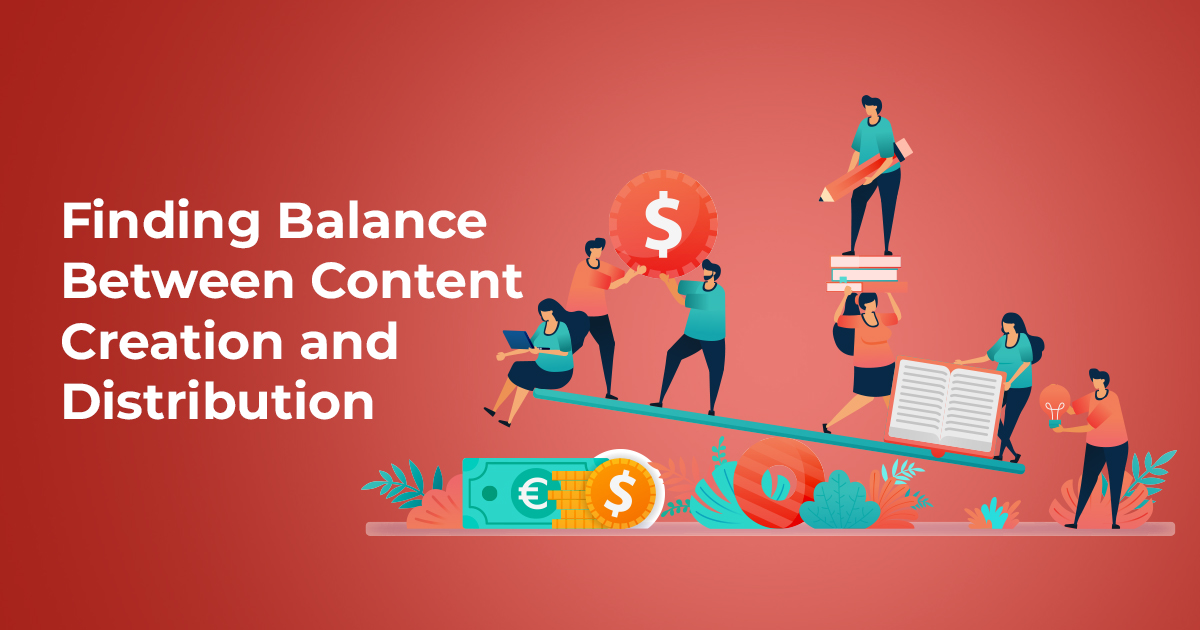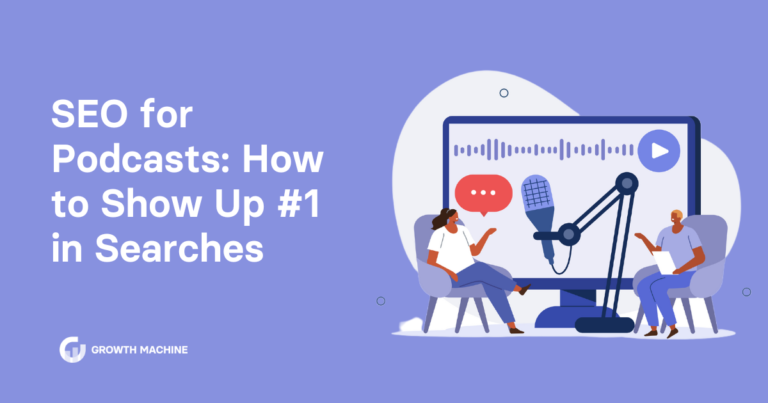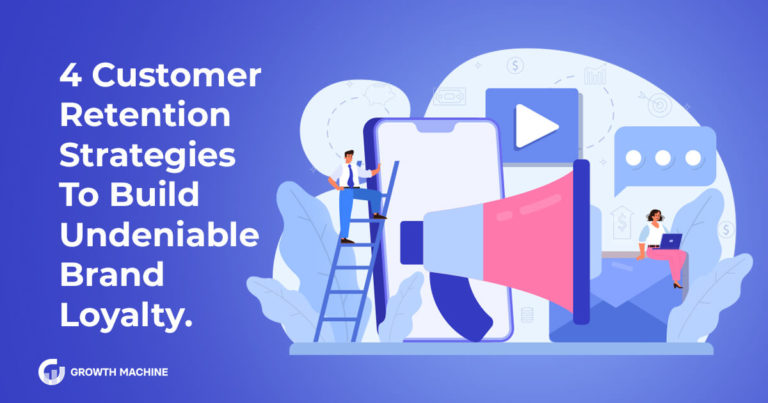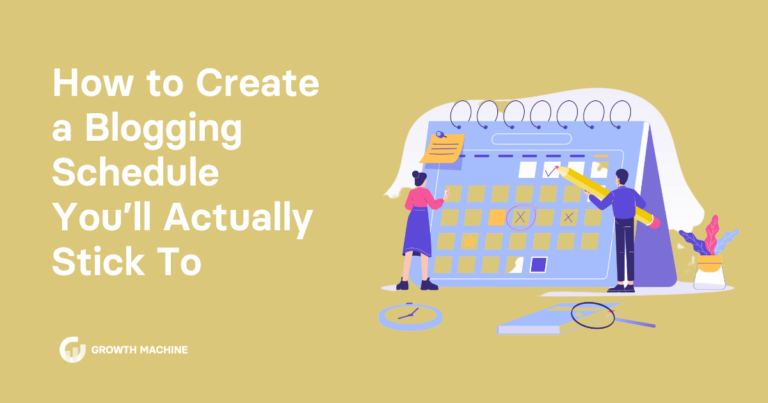Finding Balance Between Content Creation and Distribution
When it comes to content marketing, Steph Smith wants you to keep one thing in mind:
Just because you build it, doesn’t mean they’ll come.
Content marketing is split into two phases: content creation and content distribution. Meaning, once you hit “publish” on that blog post or ebook, the work has just begun. And if you’re taking Steph’s advice — which we’re inclined to do, considering her ebook reached $40,000 in sales its first month — those two phases should have an even 50/50 split.
As marketers, it’s easy to get caught up in the creation hamster wheel — only wanting to create, create, create. But even if you write the most poetic, Pulitzer-worthy piece, no one will read it if they don’t know it exists.
That’s where content distribution comes in. Below, we explain the balance between content distribution vs. content creation, and why you need both to run a successful content marketing strategy.
Content Distribution vs. Content Creation: Why Distribution Matters
Content distribution is how you get your content in front of your target audience.
On a recent episode of the Growth Machine Marketing podcast, our Head of Marketing Amanda Natividad interviewed Steph Smith on how she promoted her new ebook, Doing Content Right. As a seasoned content marketer who now runs Trends at The Hustle, Steph understands that creating is merely half of the content equation.
In fact, when discussing what separates great content from the rest, Steph noted, “People associate success with what’s been created,” when in reality, successful content is usually published by really good marketers.
This is where the content distribution vs. content creation debate begins.
A content distribution strategy ensures that your hard work (in creating content) pays off. Without a clear distribution plan in place, that masterful, high-quality content piece you just wrote may never get read.
How Steph Smith Leveraged Content Distribution To Garner $40,000 in eBook Sales
When putting together your content strategy, Steph tells marketers to spend half the time creating, and the other half promoting. She followed her own advice to sell her ebook, beginning the distribution process before she hit publish.
In other words, Steph doesn’t suggest a create-stop-distribute-stop approach to content marketing. Instead, content creation and distribution should be intertwined — and you should think about promotion while you create.
To promote her ebook, Steph took the following actions (note: this isn’t a comprehensive list, just a few favorites we couldn’t resist sharing):
1. She Leveraged the Audience She Already Had
If you want to get in front of an audience, you first need to ask yourself, “Where does my audience hang out online?”
As a writer and content marketer, Steph’s primary audience existed on Twitter — a platform where she’s amassed roughly 10,000 followers. Therefore, she let her Twitter audience know an ebook was coming long before she hit publish.
At Growth Machine, we leverage a number of different content distribution channels to get in front of our audience. We publish podcasts on the Growth Machine Marketing Podcast, regularly author an email newsletter, and promote our content on our social media accounts, such as Twitter and LinkedIn.
2. She Hosted a Pre-Sale To Garner Testimonials
Your greatest sales asset will always be your clients.
Steph distributed her book in two phases: First, in a pre-sale, and second, within her official launch. When she officially hit the ground running (er, selling), she already had 400 purchases from her pre-sale.
A pre-sale helps you leverage one of the best distribution platforms: word of mouth. The 400 loyal buyers from Steph’s pre-sale transformed into her own in-house influencer marketing team, praising the book’s worth across their social media channels.
At Growth Machine, we don’t host pre-sales, but we do understand the value of a testimonial. We regularly share client testimonials and publish case studies of our clients’ success. While we believe wholeheartedly in standing behind one’s work, we understand it means so much more coming from a satisfied client.
3. She Published a Killer Sales Page
Whether you’re publishing a new piece of content or launching a new product, your website should offer more information for potential buyers.
In fact, the first thing Steph wrote in her book wasn’t a chapter — it was her table of contents (and a detailed one at that). Steph took her table of contents and published it on her sales page. That way, when potential buyers came to learn more about her book, they knew exactly what they were buying.
While we typically focus on blog content at Growth Machine, we do help clients optimize existing web pages, or create new ones. Having a clear, search engine optimized site allows your audience to learn more about your company (without having to work hard to find it).
How To Develop an Effective Content Distribution Strategy
If there’s one thing good content and good distribution have in common, it’s this: Everything starts with your audience.
The best, most relevant content will always answer questions from your audience. And the best distribution strategies will always meet your audience where they are. Therefore, every content distribution strategy will be slightly different (if you’re doing things right).
That said, here are a few ideas for getting the right content in front of the right audience:
1. Research Your Target Audience
We said everything starts with your audience, didn’t we? Create a content marketing persona to enable your content production and distribution.
Use Google Analytics to understand how your audience found you, and what questions they asked. Browse through your various Reddit or Quora threads to understand which questions your audience asks in the comment section. Finally, use social media platform metrics to understand which posts drive the most engagement from your target audience.
2. Transform Every Piece of Content Into Different Types of Content
Repurposing a longer piece of content into smaller, more easy-to-digest anecdotes forms the core of content distribution.
For example, you could transform your newly-published ebook into a series of infographics that could be pieced together in a webinar or slide deck. Or, you could break apart a single blog post into multiple social posts. Or, you could write an email marketing campaign to drive traffic toward your new whitepaper.
3. Optimize Each Piece of Content for Google
Implementing an effective SEO strategy helps you grow your audience.
Here’s why: If you distribute your content through email and social shares, your content is only displayed to existing subscribers or followers. However, by optimizing each post for Google, you get your content in front of people searching the exact questions you just answered. (And if you’re ready to prioritize your SEO strategy, you know who to talk to.)
4. Refurbish (and Redistribute) Existing Content
People share content when it comes from a trusted source. To become a trusted resource, it’s not enough to publish new content — you need to dig up what you already wrote.
At Growth Machine, we continuously refurbish existing content for our clients, optimizing it for Google, inserting new backlinks to relevant content, and ensuring it’s still relevant. By publishing and recirculating evergreen pieces, our clients become a trusted resource among their target demographic.
Content Distribution vs. Content Creation: You Need Both To Reach Your Audience
Steph left us with this message: Great marketing starts by creating a great product.
To create an effective content marketing strategy, you need both creation and distribution. High-quality content is far easier to share and sell than a clickbait piece. Meanwhile, if you spend countless hours producing must-read content, you should spend an equal amount of time ensuring people read it.
Effective distribution starts with understanding your audience. Know which questions they ask, where they ask them, and how to most effectively answer them. Lastly, implementing an SEO strategy helps grow your audience, thereby growing your distribution network.
If you’re reading to implement an effective, optimized content strategy to help reach and scale your audience, contact us to schedule a consultation.







